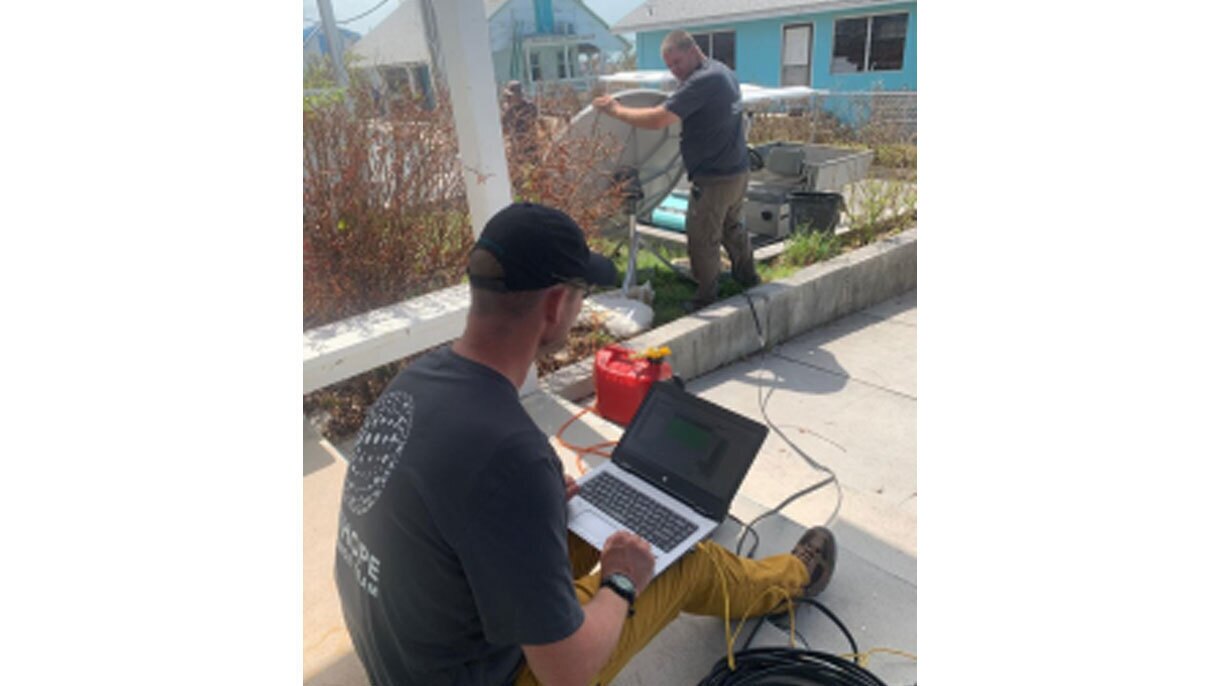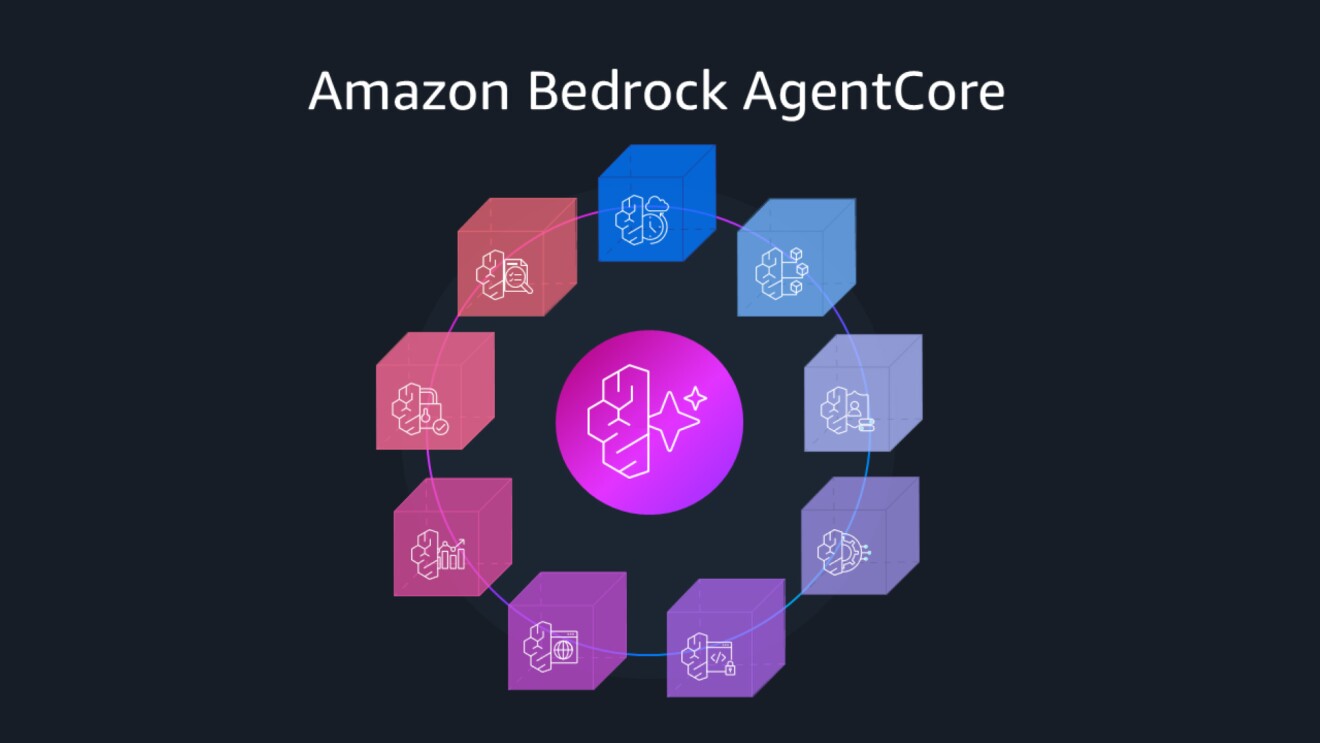When Paul Fries joined Amazon Web Services (AWS) two years ago as a senior cloud infrastructure architect, he brought more than a wealth of technology expertise to the company. He also brought a deep desire to put his skills to work for a greater good—helping communities recover after major disasters.
Soon after joining, Fries learned about a fledgling employee volunteer program to support organizations actively responding to natural disasters: the AWS Disaster Response Action Team (DRT) volunteer program. Fries, who also volunteers for the Maricopa County, Maricopa Sheriff’s Office in Arizona, seized the opportunity to serve the company and pursue his passion for helping people on a larger scale.
There's a lot of work that can be done from behind a desk, so whatever you bring to the table—you can be part of the program and really help.
Paul Fries
Senior cloud infrastructure architect at AWSSince joining AWS, Fries has supported three volunteer deployments. The first was after Hurricane Ida devastated southern Louisiana communities in late August 2021. Fries worked with the Information Technology Disaster Resource Center (ITDRC), an IT-focused non-governmental organization (NGO), to help set up temporary communications infrastructure to provide connectivity for National Guard troops and the Federal Emergency Management Agency (FEMA). He also worked in the field, setting up mobile phone charging stations and Wi-Fi hotspots. He again deployed with the AWS DRT volunteer program alongside Help.NGO to support unmanned arial vehicle (UAV) imagery collection and processing, using AWS Snowball Edge devices—images which were requested by local government and recovery organizations to help understand the extent of the damage. Most recently, he deployed to Poland in support of Help.NGO’s efforts to help with the war in Ukraine. This support has included helping stand up AWS compute environments and secure satellite communications to enable collaboration and tactical awareness for NGOs supporting humanitarian efforts inside Ukraine.
“Everyone has an inherent desire to make a positive impact, but sometimes we don’t know how we can add value,” Fries said. “This program allows Amazon employees to make a real contribution, regardless of skillsets or bandwidth. You don't have to be a cloud architect or a telecom expert and you don't have to be deployed into a post-disaster situation. There's a lot of work that can be done from behind a desk, so whatever you bring to the table—you can be part of the program and really help.”

Small, scrappy program goes global
AWS is now formally launching the DRT volunteer program globally. AWS’s volunteer program was started as a small and scrappy concept in 2018. Originally designed to serve as an extension to the core AWS Disaster Response team, a full-time team of experts within AWS dedicated to helping customers, partners, and communities prepare for and recover from disasters. The model has grown considerably as more employees have become involved. Volunteers across the company logged nearly 1,500 hours last year supporting disaster preparedness and response efforts and have already clocked nearly 2,000 hours so far this year.
As part of the formal launch of the program, AWS’s expanded volunteer program will:
- Scale to recruit Amazon and AWS volunteers globally, giving the core AWS DRT the ability to deploy local volunteers and get “boots on the ground” in international locations more quickly.
- Add a UAV or drone pilot “flight school” for qualified volunteers, teaching select volunteers how to operate small UAVs that are used to assist with post-disaster mapping work.
- Provide “in the field” experience to volunteers, by including select volunteers in the new AWS Disaster Response field-training exercises and training on field-relevant AWS technology and proofs of concepts developed by the disaster relief team.
“We are excited to scale this program to better support communities in need—particularly as we head into hurricane season,” said Dave Levy, vice president, U.S. government, nonprofits, and healthcare, Worldwide Public Sector at AWS. “AWS has long been committed to providing support in the wake of hurricanes, fires, earthquakes, and major global events. The AWS DRT volunteer program is an extension of that work, supporting employees as they step out of their day-to-day roles to lend their skillsets to communities.”
Volunteers are required to take specialized training—including instruction from FEMA and the Red Cross—before deploying to support nonprofit partners, such as Help.NGO and the ITDRC. The program allows employees to dedicate up to two weeks of paid time as an AWS DRT volunteer program participant. The program is structured to allow volunteers to help no matter their level of technical expertise, and is split into three teams:
- Away Team: This refers to technical volunteers who can travel onsite to a disaster. For example, in the event of a hurricane, these volunteers could deploy to the scene, working alongside customers and partners to rebuild communications infrastructure, coordinate cloud computing workloads, and conduct aerial mapping and imagery processing of affected areas to help scope the damage and terrain.
- Home Team: This refers to volunteers to support from wherever they are. The Home Team is composed of employees who support remotely with program management, AWS cloud services or architecture skills, or support deployed teams with other activities such as situational awareness monitoring or geospatial analytics.
- General Disaster Volunteers: Employees who aren't required to have specific training, but can commit small amounts of time on an ad-hoc basis, when there's a need. This could include staffing virtual call centers or participate in virtual mapping exercises designed to help humanitarian organizations and first responders prepare in advance of a disaster to quickly identify critical infrastructure such as hospitals, schools, and roads.
Trending news and stories
- ‘Young Sherlock’ premieres March 4: How to stream the Guy Ritchie series on Prime Video
- Alexa+ can now answer your Ring doorbell and talk to visitors
- ‘Beast Games’ Season 2 is coming to Prime Video—See the new trailer
- How Amazon Pharmacy has helped customers save more than $100 million on prescription medications like GLP-1s and insulin










